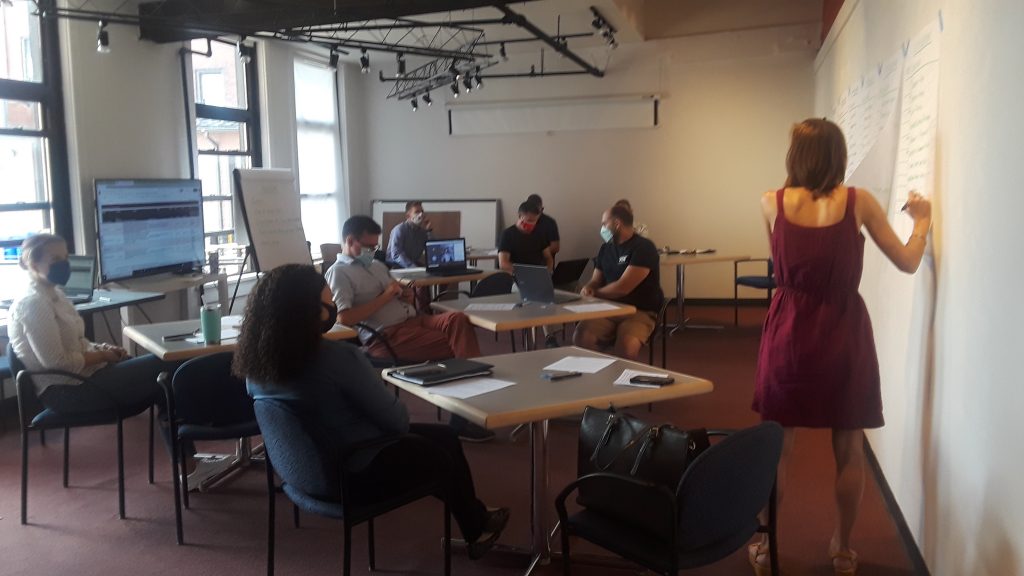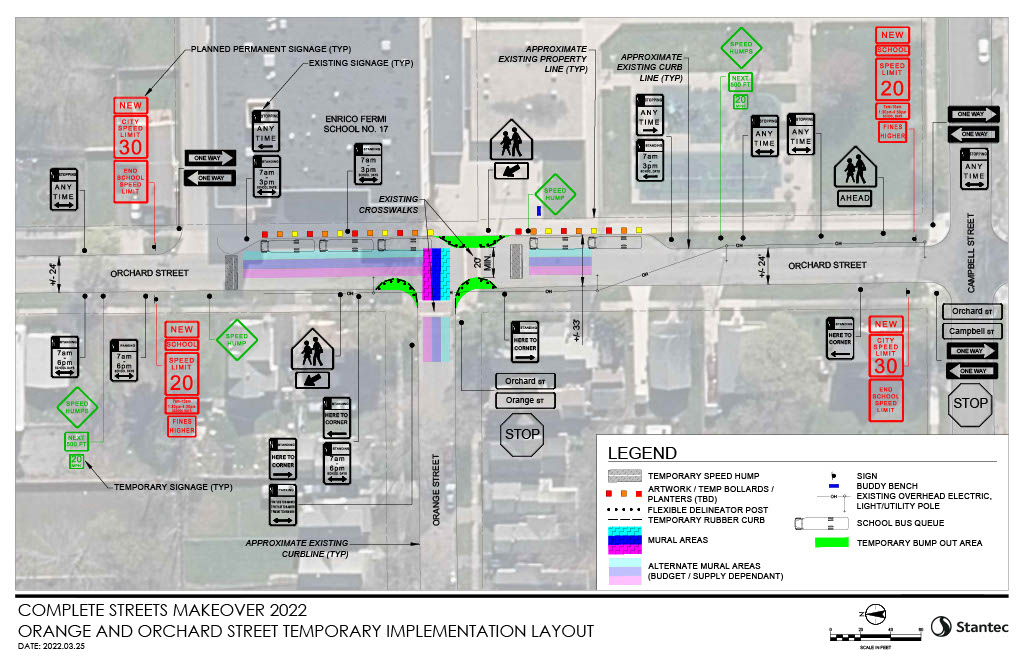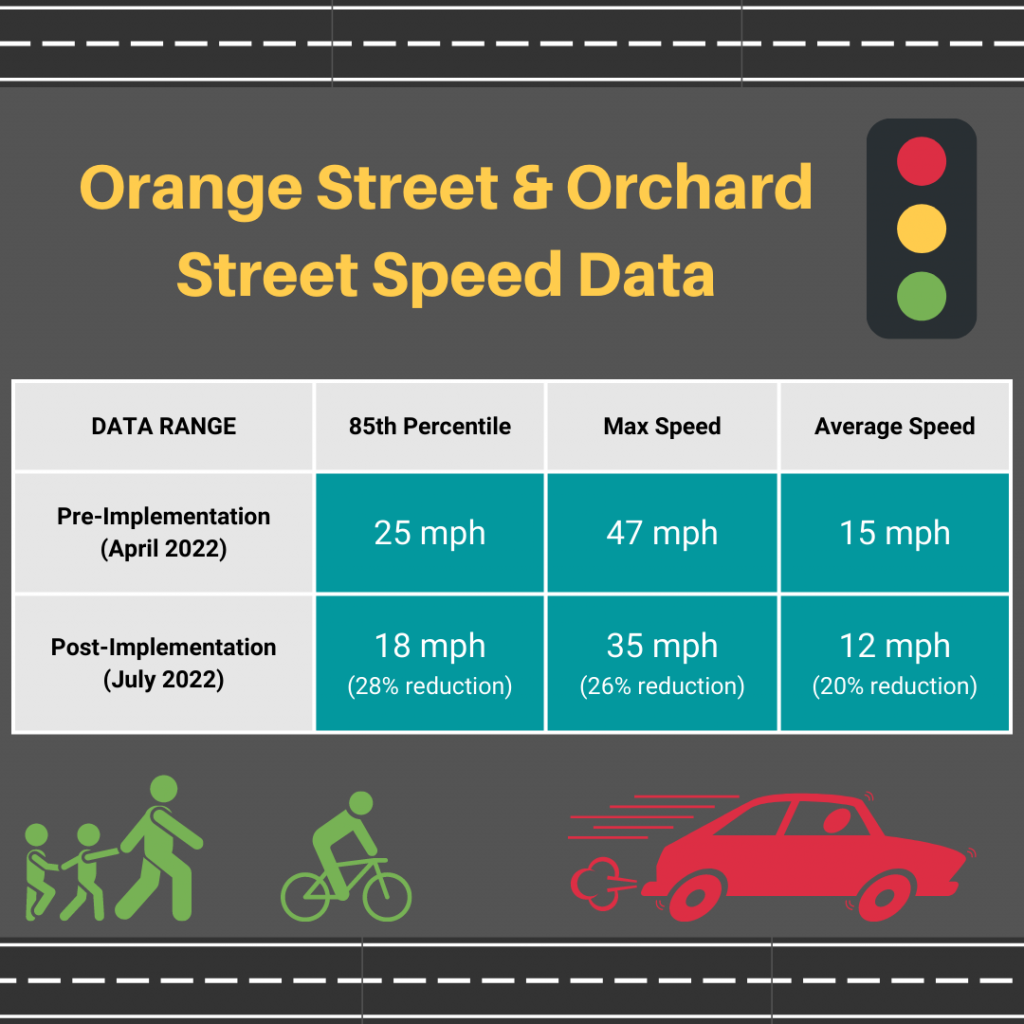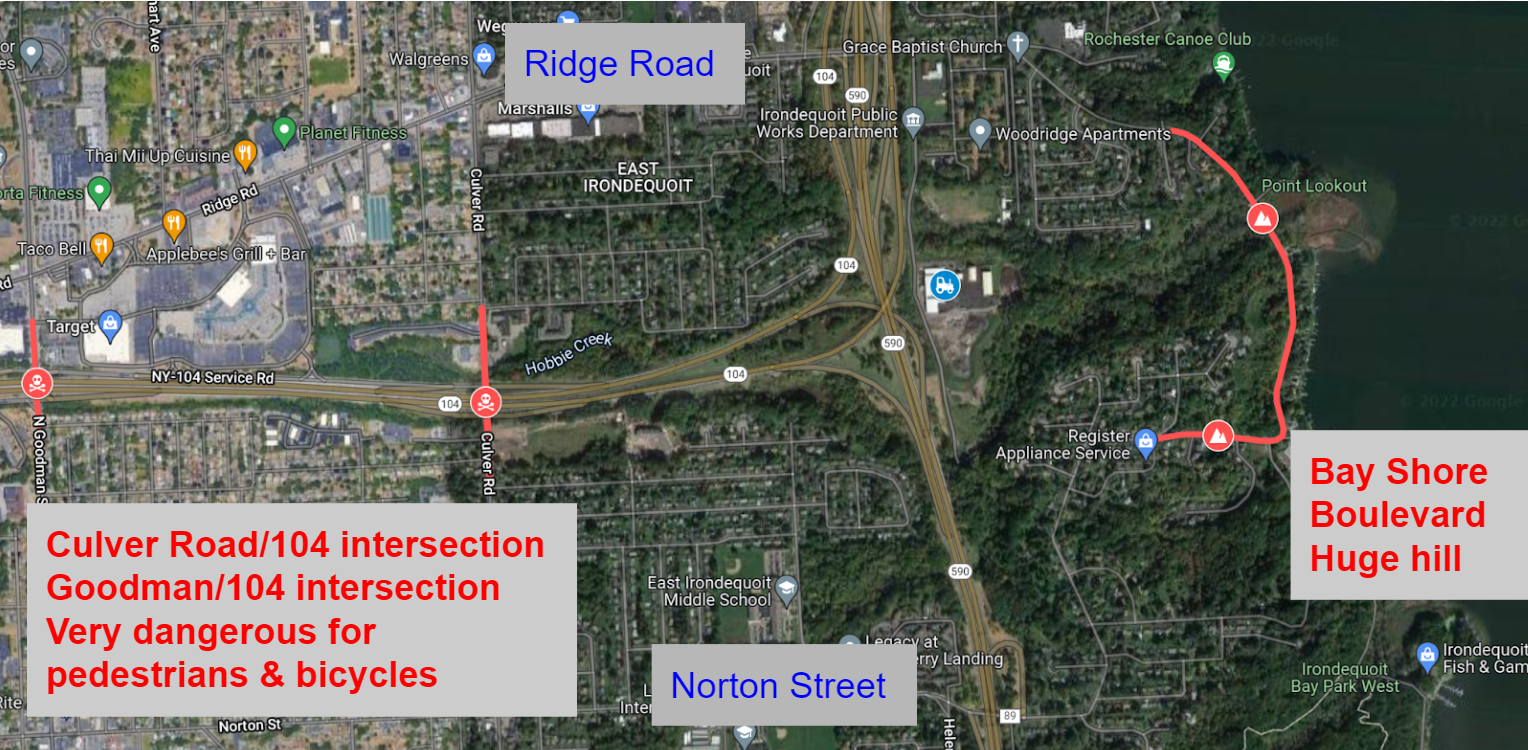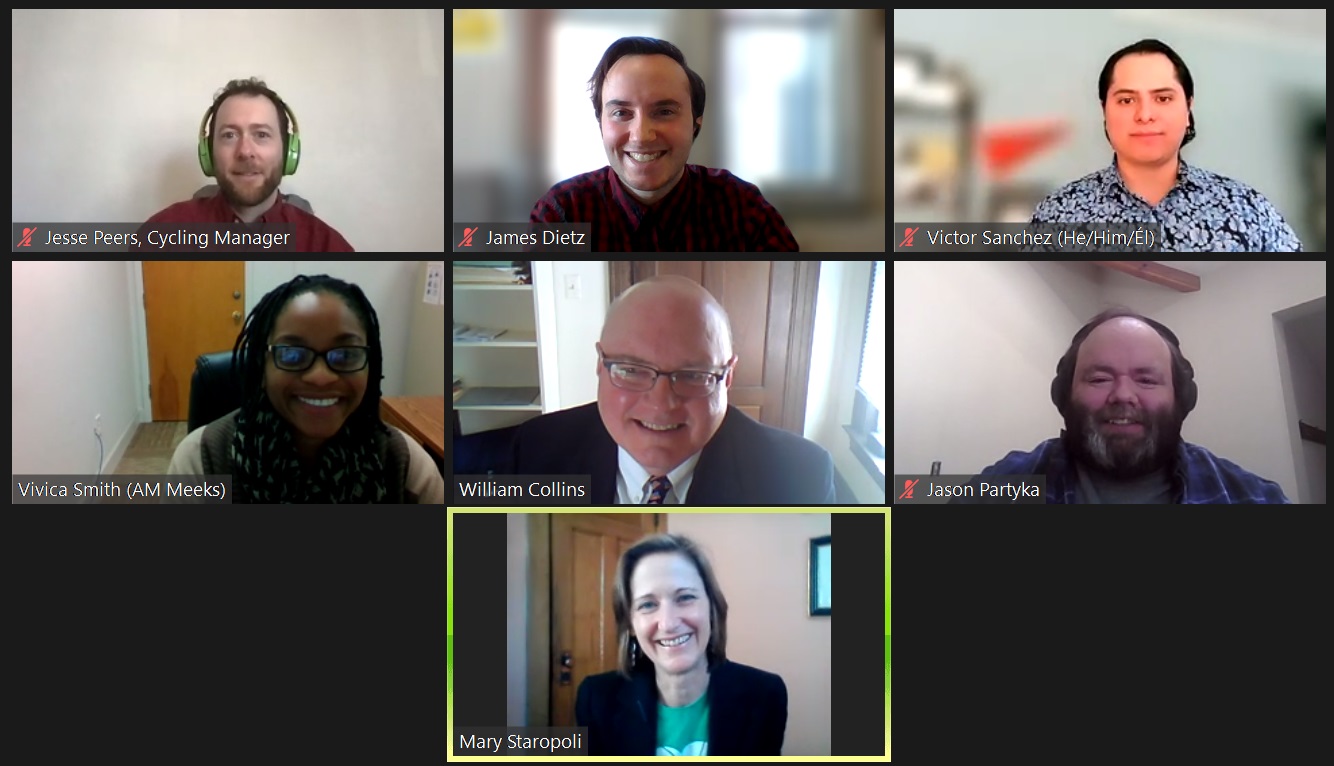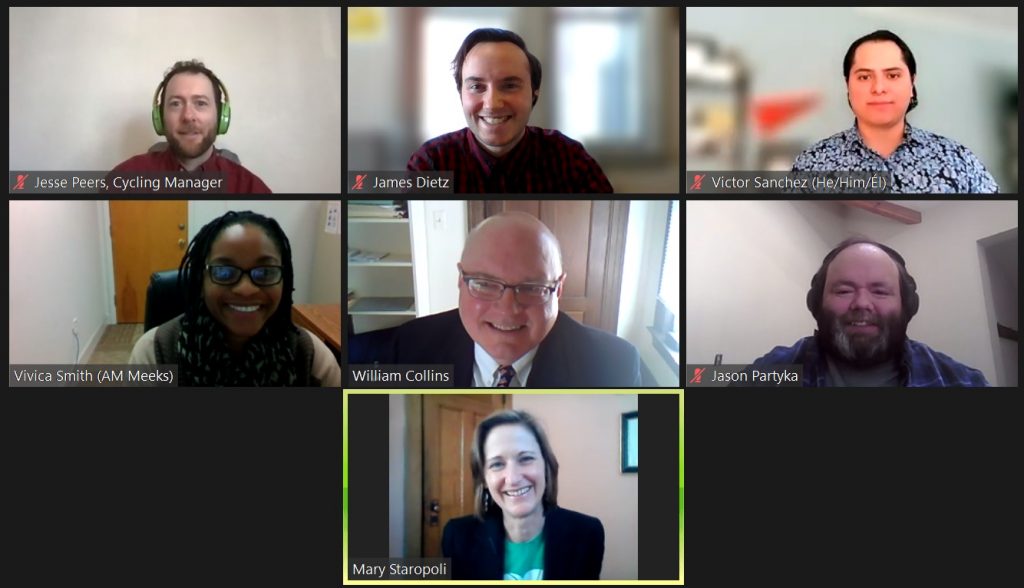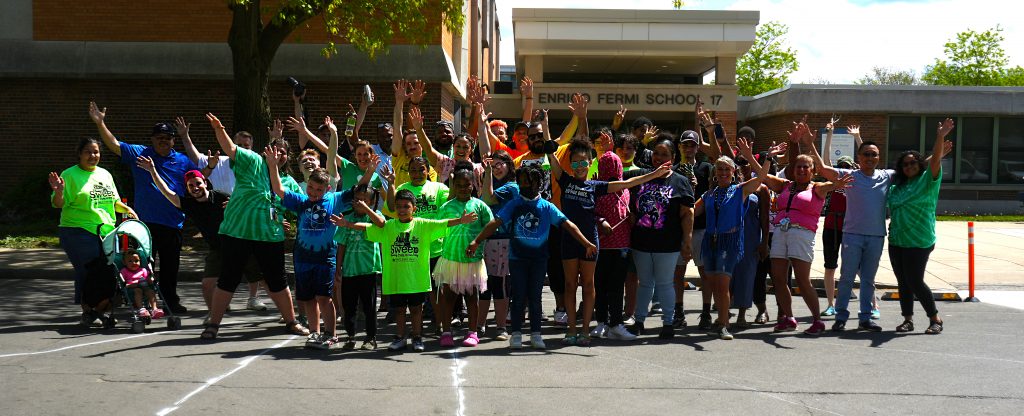
As we report out on the third successful Complete Streets Makeover project, let’s remember why we do this.
In the U.S., pedestrian fatalities have skyrocketed, increasing by 59% from 2009-2020. According to the latest “Dangerous By Design” report, between 2009-2020, drivers struck and killed 64,073 pedestrians in this country. Here in Monroe County, from 2012-2021, over 5,000 crashes involved bicyclists and pedestrians, and ten people die on our local streets every year as a result of these crashes.
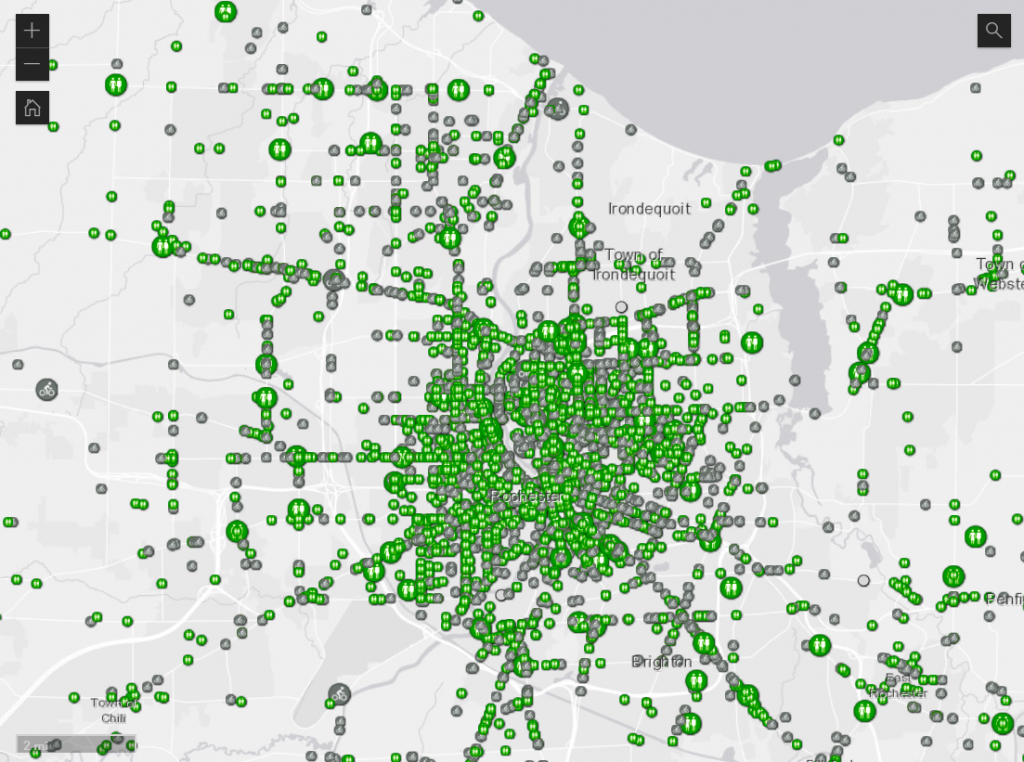
Responding to this growing epidemic was the impetus behind our Complete Streets Makeover project, created to bring attention to street design as one critical factor in the safe streets equation.
The Selection Process
We began this year’s project back in July 2021 by asking you (the people that walk, bike, and roll along our streets every day) to help identify the intersections and trouble spots where you live, work and play that could be redesigned to make them safer for everyone. The community response was tremendous, and we received a total of 76 nominations for 68 locations in Monroe County.
From these submissions, our Steering Committee selected the intersection of Orange Street & Orchard Street in the JOSANA neighborhood for this year’s project.
The Orange & Orchard location presented the right mix of community support, evidence of safety concerns, and potential for a street redesign that would create real, transformative change for the community through this project. School 17 is located right at this intersection and was a strong advocate for implementing change. Last fall, the Rochester City School District eliminated the Walker-Bus Program that had provided transportation for students living within 1.5 miles of their school, which contributed to the school’s desire to improve safety for its walkers.
Getting Community Input
So what happened next? We connected with representatives of School 17 and the JOSANA neighborhood, and together we planned a community workshop held in February at the school. We invited school families and residents to come share their experiences at this intersection and ideas for how it could be safer. At the workshop, which was facilitated by the Community Design Center of Rochester-CDCR, attendees were first led through the basics of road safety statistics and complete streets. Then, CDCR volunteers helped translate the community’s thoughts and desires into actionable design elements that would improve the intersection.
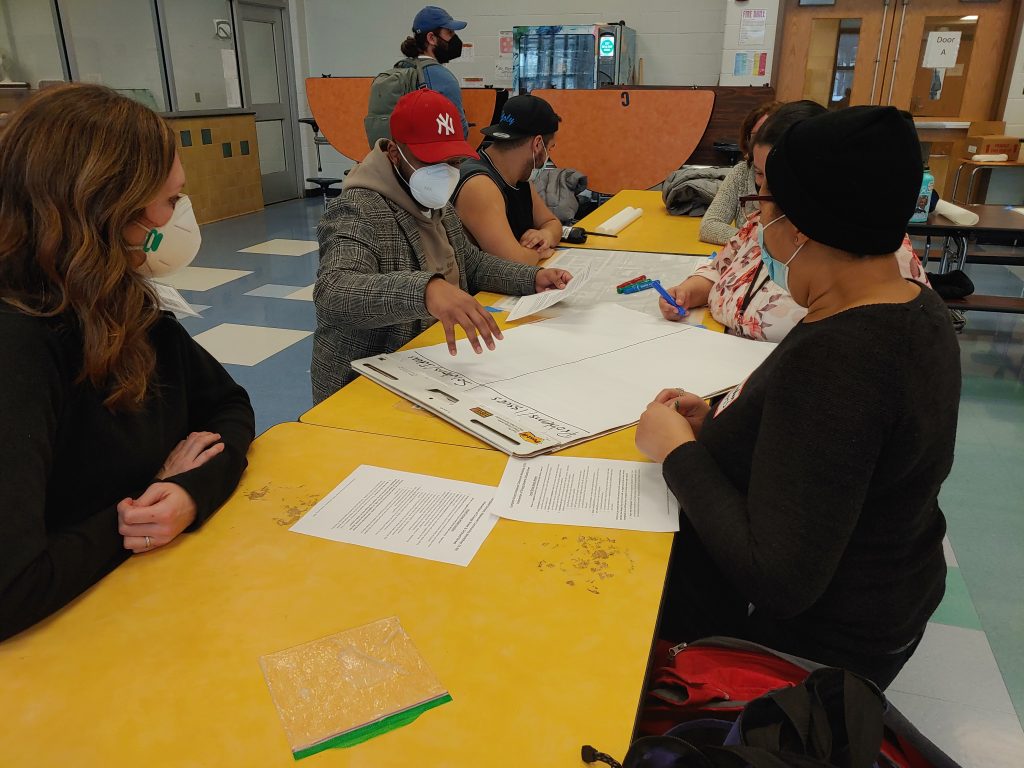
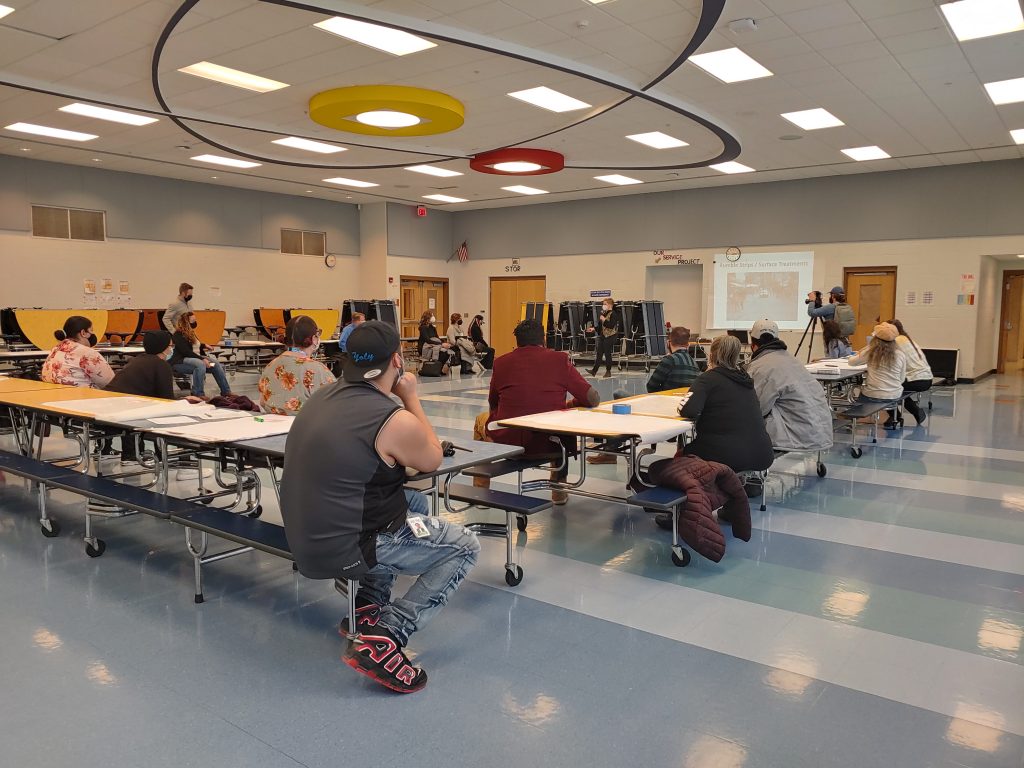
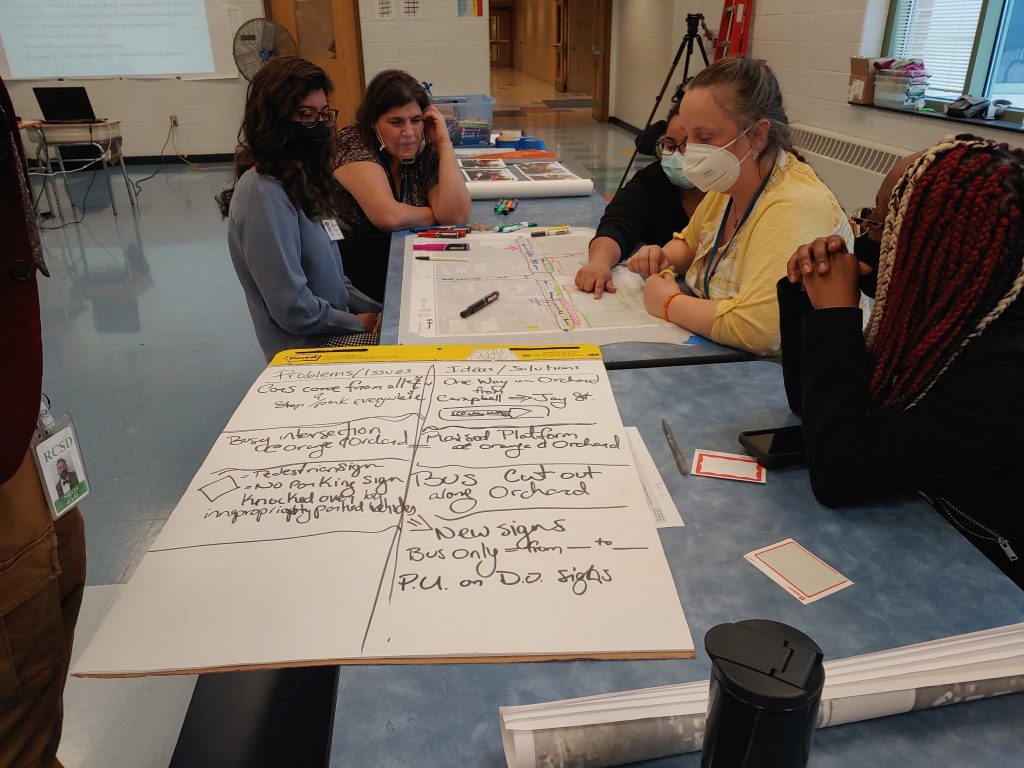
Based on community input from this session, the Stantec team drafted a conceptual drawing of street design improvements. Their rendering focused on elements that could be brought to life in the temporary, on-street installation and then translated into permanent improvements.
Making Magic at Orange & Orchard
After much planning with the JOSANA neighborhood, over 150 people came out to Orange & Orchard on May 14 to make the magic happen! Attendees were made up of people from the neighborhood, school community, and a team of community partners*. Together, we worked to make the intersection of Orange Street & Orchard Street a more vibrant, safer place for everyone.
Design elements to calm traffic and improve safety included enhanced signage, curb extensions, temporary speed cushions, and a street mural designed by local artist Shawn Dunwoody. The temporary design was created by Stantec, which donates pro bono professional engineering services for the project. Other elements to beautify the space, like fence art and flower planters, were done with help of 2nd graders as part of their class project.
Nothing captures the life of a project better than film. Reconnect Rochester is pleased to share this short film, produced by Floating Home Films, that tells the full story.
We hope you enjoyed watching a beautiful display of community! We will continue supporting the neighborhood in their effort to make these temporary street design improvements permanent.
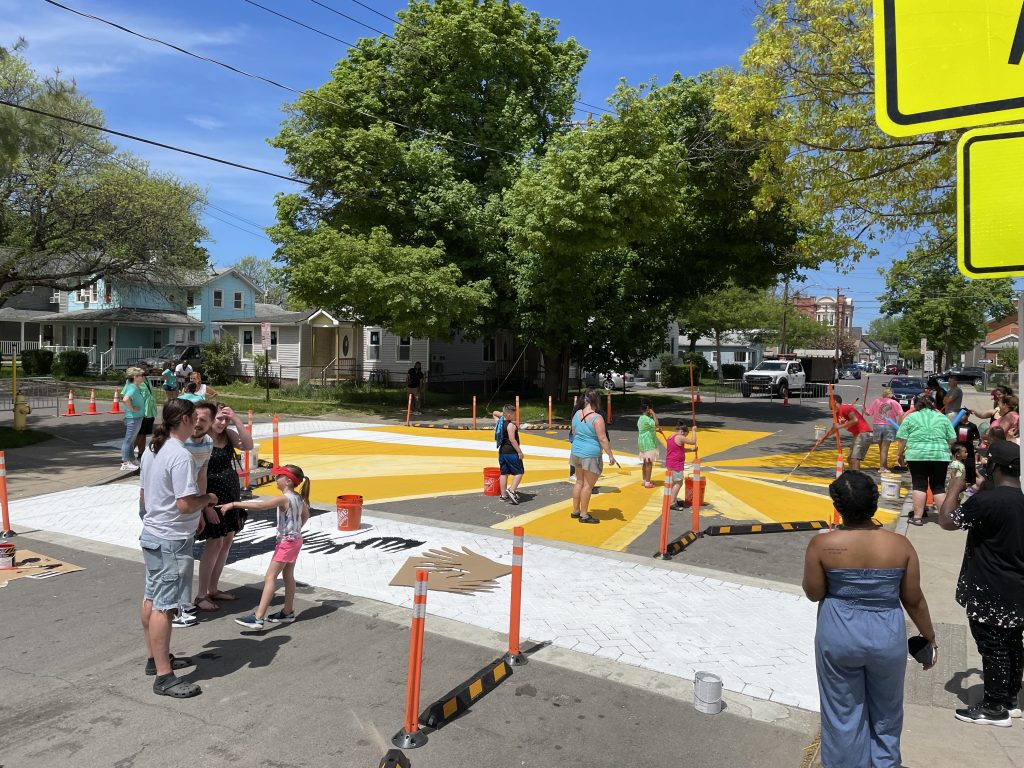
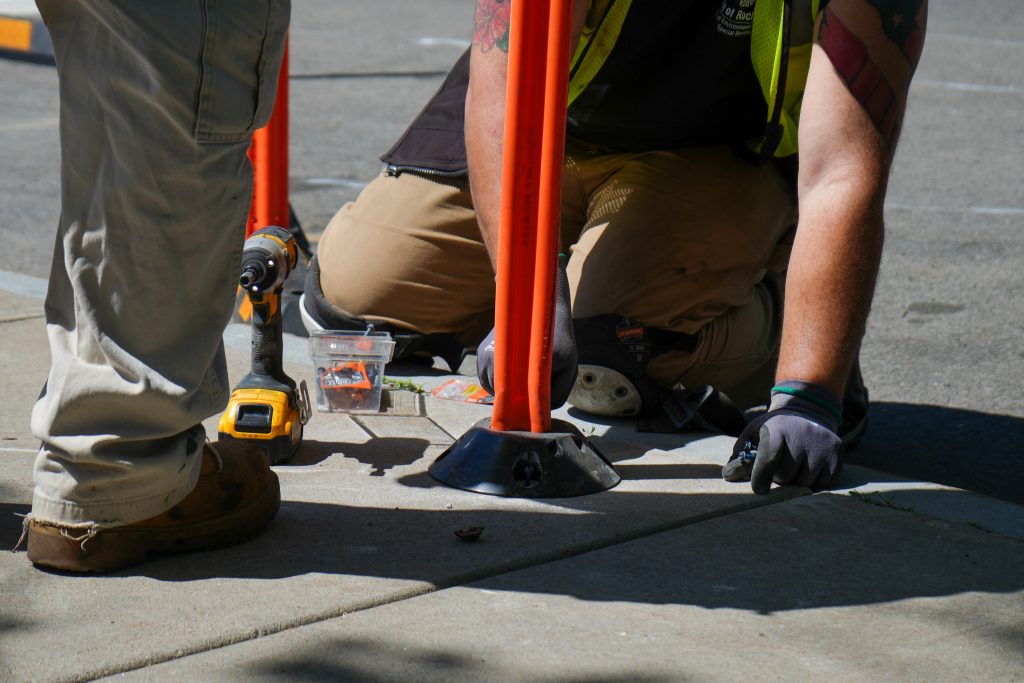
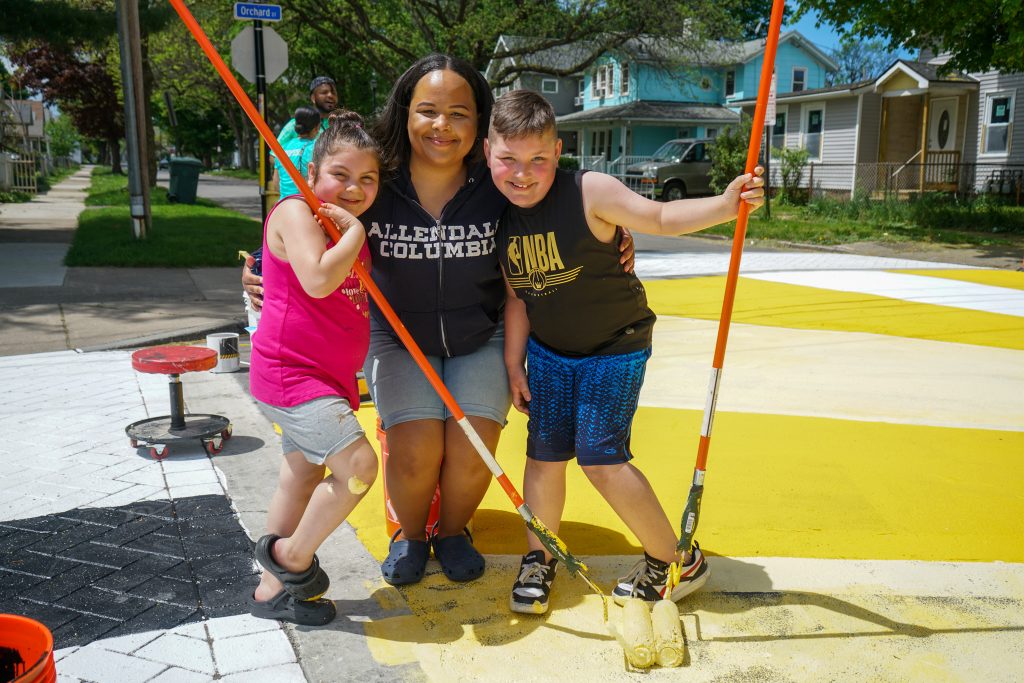
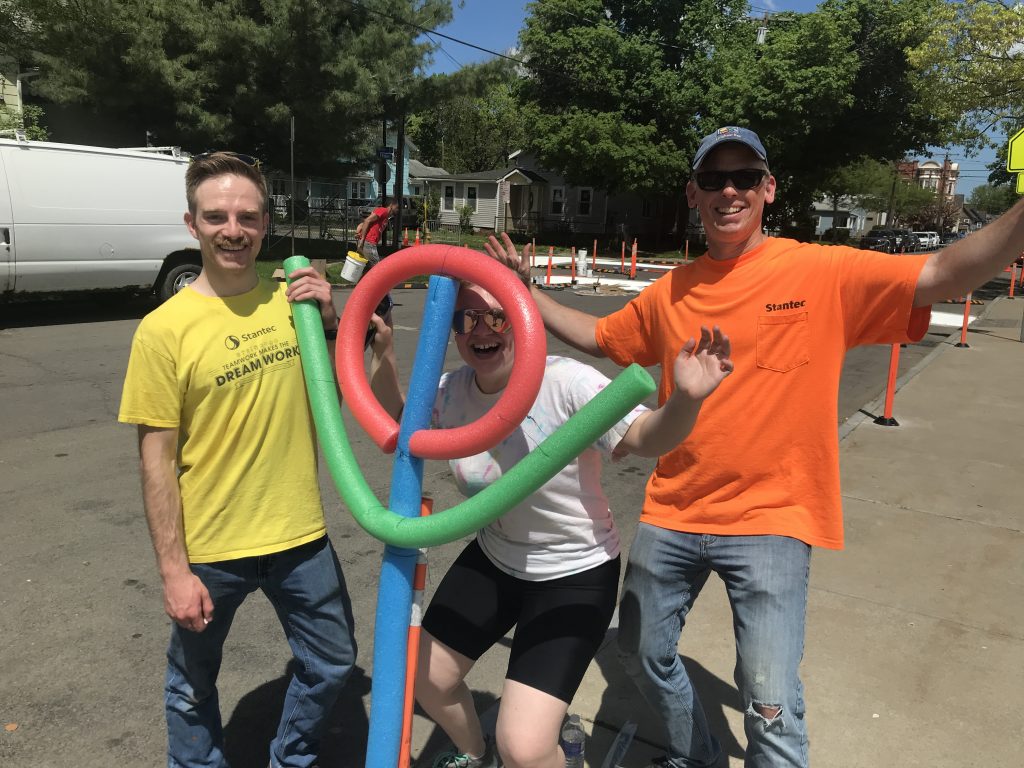
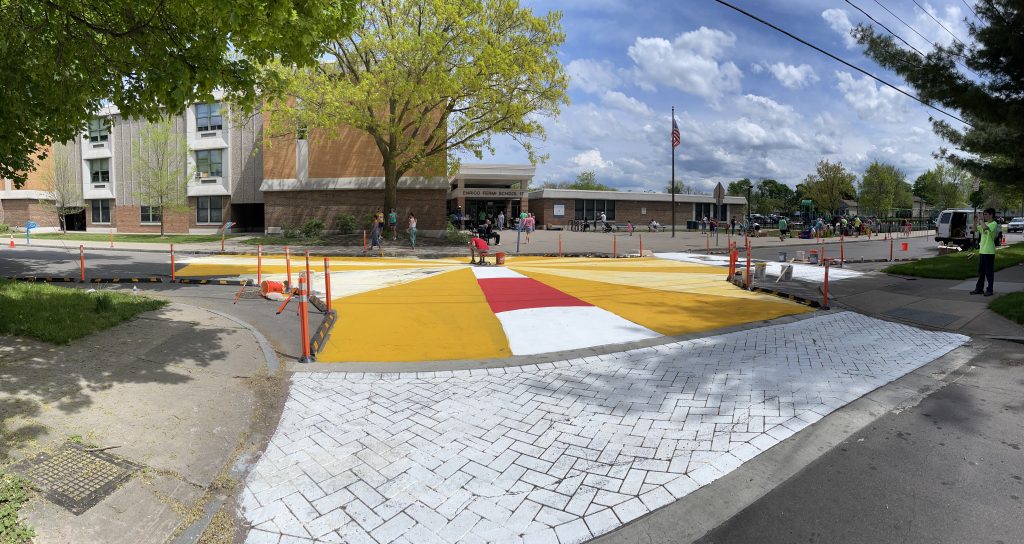
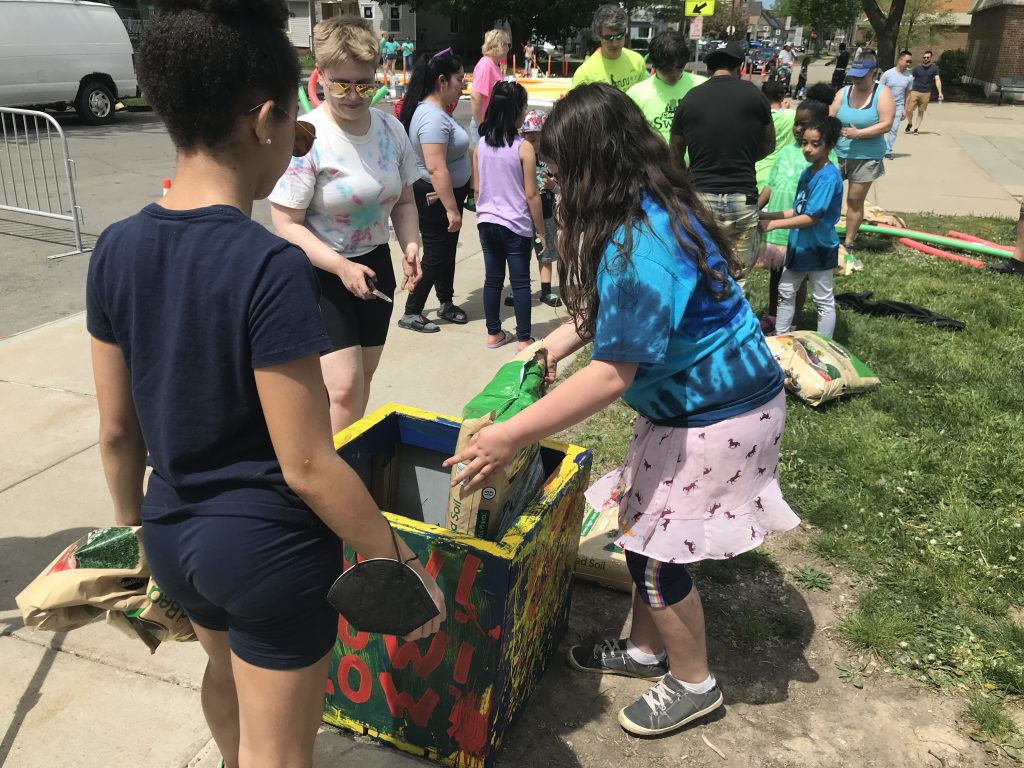
Photos 1 & 5: Stantec | Photos 2 & 3: Common Ground Health | Photos 4 & 6: Reconnect Rochester
The Impact
But did it make a difference? YES! Data collected before and after the implementation (April and July, respectively) shows a measurable decrease in vehicle speeds along Orchard Street. Let’s get specific.
Since the implementation, the 85th percentile speed (the speed that 85% of vehicles travel at or below) declined 28% and the maximum speed declined 26%. It’s worth noting that the maximum recorded speed in July happened between 1:15am and 1:30am. Other than that outlier, the maximum speed was only 32 mph! Even the average speed dropped 20%, despite there being no school in July. This is particularly notable with the safe assumption that arrival/dismissal congestion suppressed the speed of a great deal of traffic during our April data collection. Finally, the speed data showed only 13 of 1,017 vehicles were traveling over 25 mph.
When it comes to speed, each mile-per-hour a driver is traveling makes a difference for pedestrian and cyclist safety, and can be the difference between life and death or a person sustaining life altering injuries.
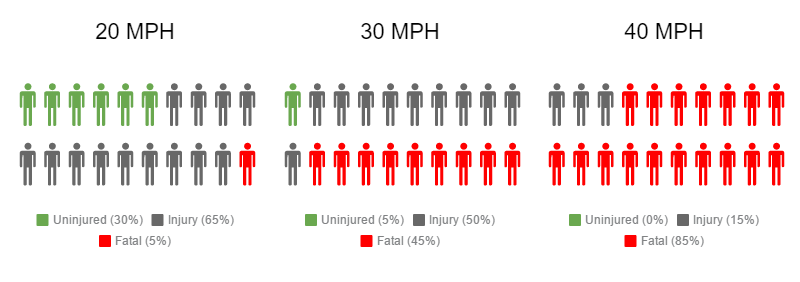
Learn even more about the Complete Streets Makeover of Orange & Orchard
- A WXXI Connections show podcast with the School #17 principal, project coordinator and parent as guests
- A spectacular photo gallery, courtesy of De’Jon Washington
- A recap blog by The Healthi Kids Coalition
- Our press release
- Media coverage by 13 WHAM
Looking Ahead
Our awesome team is on board to continue our Complete Streets Makeover program in 2023 and beyond! So keep taking note of the intersections and trouble spots you experience in your daily travels that could use a re-design, and keep an eye out for calls for public submissions. Together, we’ll keep advocating to design our streets for people, and we’ll keep making it happen one intersection at a time.
*Community Partners
The Complete Streets Makeover of Orange & Orchard was a collaborative venture with the following community partners:



